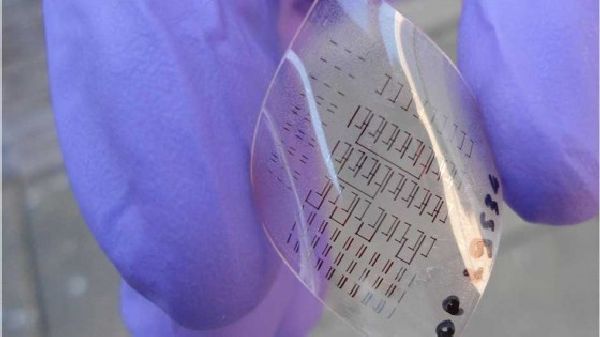The field of plastic electronics has been given a boost with the invention of a new technology that could soon see the world using them in an array of applications from robotics to satellite navigation. The breakthrough was facilitated by a team of researchers at Cambridge University’s Cavendish Laboratory. Led by Prof Henning Sirringhaus, physicists Dr Enrico Gili and Dr Auke Kronemeijer developed the technology using solution processed organic semiconductors that will hopefully aid in existing applications.

With the breakthrough, plastic electronic circuits can be fabricated through a simpler process, but with higher efficiency. Normally, fabricating high performance plastic circuits requires the use of two active materials. With the new technology, the same result can be achieved using only one active material.
For years, scientists and researchers have been trying to figure out how to fabricate high performance artificial skin in a simpler manner that doesn’t require high supply voltage. With no breakthroughs, the field of plastic electronics couldn’t hope to compete against conventional silicon based electronics. Plastic electronics are made possible owing to active materials that are deposited as printable ink on polymer based substrates. The standard technology needs organic materials for the printing and the whole process can be completed in a small lab unlike microchips that require massive purpose built factories.
The ink that the researchers have developed needs just a bit more than room temperature for achieving peak performance unlike conventional silicon chips that require over 1,000 degrees Celsius to be fabricated. The new technology also allows circuits to exhibit fast operations of a several hundred KHz as compared to typical circuits that process at speeds of just a few hundred Hz.
The researchers are working on further reducing the power supply requirements to make the technology suitable for devices that incorporate printed power supplies. Once they do, the world of lighter and more flexible products will dawn and we will soon have rollable display screens for televisions and cellphones.
Via: Cam




